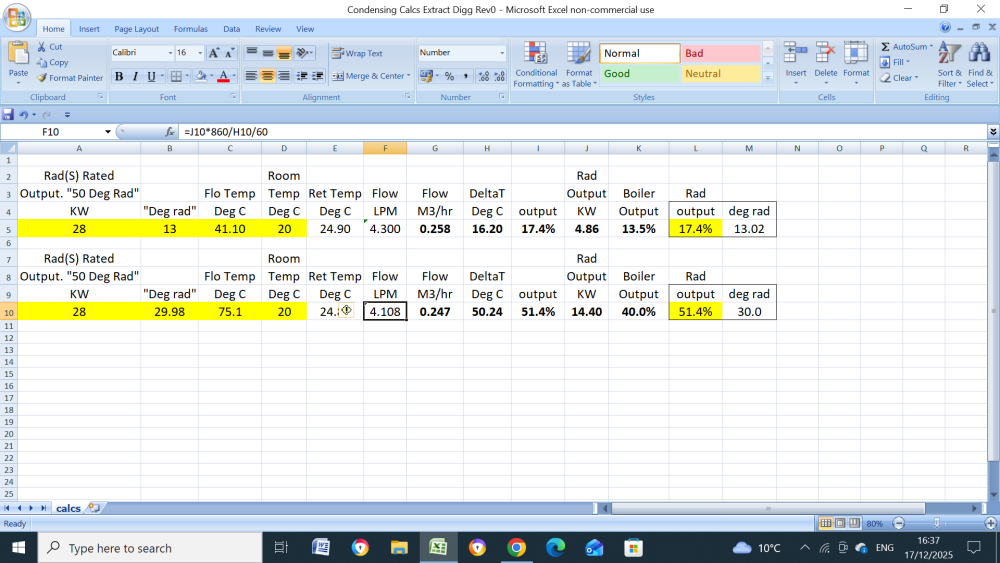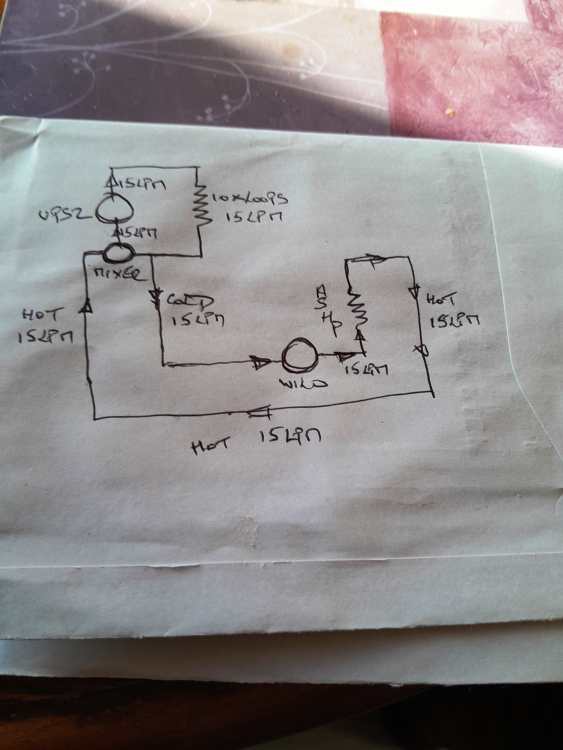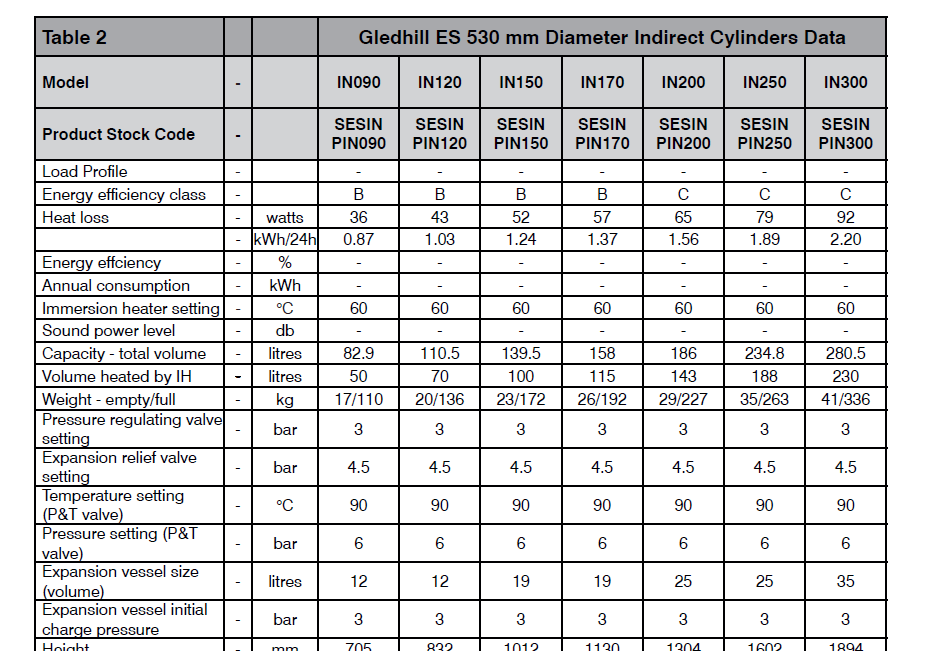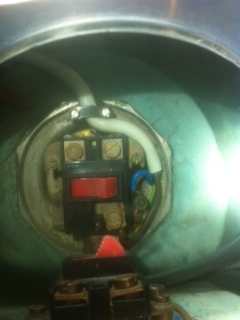
John Carroll
Members-
Posts
484 -
Joined
-
Last visited
Everything posted by John Carroll
-
Worcester Bosch Greenstar 8000 System Boiler Issues
John Carroll replied to EinTopaz's topic in Boilers & Hot Water Tanks
A modulating boiler cannot have the cut out at its target value, otherwise the burner will shut down every time the target value is reached, a non modulating boiler like my oil fired one, does cut out at its target value and has a ~ 8C hysteresis so will cut back in at target value - 8C. Also a modulating boiler will fire flat out (or whatever its range rated to) until the target value is reached, it will then ramp down once the target value is reached or slightly higher so its vital to have 4/5C leeway to avoid the burner tripping needlessely, I often see my daughters Vokera Vision 20S firing up and it exceeds the target value by 2/3C before it ramps down sufficiently to match the load, it will then maintain the target value within + or - a degree or two, as you say also useful when antcycling. I think modulating boilers also don't enable refiring until the measured value is at targer value - 5C or so, obviously, since most gas boilers fire up at ~ 65% output then the anti cycle period is timed so that the measured value is well less than this to avoid excessive overshoot on refiring. -
Worcester Bosch Greenstar 8000 System Boiler Issues
John Carroll replied to EinTopaz's topic in Boilers & Hot Water Tanks
Interesting, if the measured flow&return temperatures are a steady 41.1C/24.7C then the boiler is just about running at its minimum output, by calculation its running at 4.86kW, 13.5% modulation but at a utterly abysmal flowrate of 4.4LPM, on the other hand, if, by some miracle its running with a flowtemp of 75C but with the same return of 24.9C then it's output is 14.4kW, 40% modulation, but at a huge dT of over 50C which most boilers would not continue running with, (max dT normally tolerated is ~ 30C), the WB does not monitor the return temperature. -
Worcester Bosch Greenstar 8000 System Boiler Issues
John Carroll replied to EinTopaz's topic in Boilers & Hot Water Tanks
Can you recall what the boiler modulation was with your 41.1C/24.7C flow/return temperatures and was it and those two temperatures reasonably steady? If not, have you any numbers (modulation + flow/return temperatures) when it was?. -
Worcester Bosch Greenstar 8000 System Boiler Issues
John Carroll replied to EinTopaz's topic in Boilers & Hot Water Tanks
IMHO, there is only one logical explaination for the huge dT between the target/flow displayed temperature and the measured flow pipe temperature (and confirmed by the attending WB engineer) and that is, the displayed temperature is not tbeing taken from the flow pipe sensor but probably from the boiler HEX. It doesn't matter what kind of throttling or flowrates, as long as the boiler is firing continuously then because there is probably well less than 0.5L of water between where the boiler flow sensor is attached and the manual measuring point which means that even with a flowrate as low as 5LPM should only "take" this vol of water 5 or 6 minutes to reach the manual measuring point once it does then there should be little or no difference since the flowtemperature is then very constant for relatively long periods. -
Insufficient flow rate for Samsung ashp
John Carroll replied to Simon Brooke's topic in Underfloor Heating
A ABV will only work properly IMO when using fixed speed (constant curve) mode where (on a centrifugal pump), the head increases as the flow rate decreases, some suggest that it will work with the pump in CP (constant pressure) mode but then also requires a fixed restriction (a valve?) installed in series with it, I really can't see this working properly. If the ABV is installed as far away from the pump/boiler as possible then this should possibly help as the pipe loss decreases with decreasing flow which means increased head at the ABV and vica versa, the constant pressure is only maintained at the pump. -
Insufficient flow rate for Samsung ashp
John Carroll replied to Simon Brooke's topic in Underfloor Heating
-
Insufficient flow rate for Samsung ashp
John Carroll replied to Simon Brooke's topic in Underfloor Heating
Just wonder if there is a actual interlock via a flowswitch, etc, it just says the unit can stop, page 23, I think they can trip if the flow/return dT is too low, some alarm is surely flagged if the unit refuses to start. Could be something else stopping this unit from starting. There should really be a ABV between the flow&return anyway. -
Insufficient flow rate for Samsung ashp
John Carroll replied to Simon Brooke's topic in Underfloor Heating
Agree, also, the Wilo Yonos Pico is the RR in pump control because it's head (and output) in CP mode can be incrementally changed in 0.1M steps to give almost infinite control, assuming of course that it can achieve the ASHP minimum requirement of 17.0LPM. @SimonD, where did you get this dP of 0.5M at 17LPM from and is 17LPM written in stone or can it be changed?, if it can, and could be reduced to say 14.5LPM to get the ASHP away, even as a temporary fix just now before any plumbing changes, then maybe worth looking at. -
Insufficient flow rate for Samsung ashp
John Carroll replied to Simon Brooke's topic in Underfloor Heating
The (my) last suggestion is to just fully shut/open the TMV, the shuttle may be partially jammed/seized, it will always shut off due to the hydraulic pressure exerted by the controlling pin but only spring force opens it. -
Insufficient flow rate for Samsung ashp
John Carroll replied to Simon Brooke's topic in Underfloor Heating
If it means, which I'm sure it does, fully open to hot, then can't see that being the problem although I would still remove the setting knob and have a look. What model mixing valve is it, might be on the label. The 4/40W shows it is a 6M pump, you should still be able to see (but maybe it doesn't display this any more now) the actual power displayed. There's not much else you can check out except see if you can find the ASHP pressure loss, SimonD says "Your heat pump at the required 17l/min has a pressure drop of 0.5m head" so that definitely will not be the source of any restriction, the dP at a flowrate of 22.5LPM would still only be 0.9M. Its a bit strange as you now have 2 powerful pumps running in series at 5M head each and still only getting 15LPM? -
Insufficient flow rate for Samsung ashp
John Carroll replied to Simon Brooke's topic in Underfloor Heating
Rough Schematic below of how I imagine the system is now configured, a UFH circ flowrate of 15.0LPM is only possible now vs 22.5LPM with the original UPS pump circulating from a "heat store"??, despite the Wilo running at a 5M head when pumping water through the the ASHP, it would appear that the restriction is caused at the ASHP side since both pumps are/should now be in series. It would be useful if the ASHP heat exchanger pressure loss is known. On the other hand, the mixer is now calling for full hot water so it might be possible to make a adjustment by removing rhe setting knob and increasing this port's opening as it may be restricting the flow, when mixing, there is only ~ 25% hot mixing with 75% cold -
Insufficient flow rate for Samsung ashp
John Carroll replied to Simon Brooke's topic in Underfloor Heating
Simon said "The loops are pretty much fully open, in fact one completely undid to much merriment!. Pumps on max." so not much more scope there for improvement?. 90M of 16mm/12mm ID pipe has only a loss of 0.61M and the UPS 2 when using sun amp was circulating a total of 22.5LPM, at this flowrate a UPS 2 will run with a 4.3M head, At the present set up it will be running at 5.3M at a total flowrate of 15LPM (1.5LPM/loop), similar to the Wilo if (a 6M), I would check that the Wilo is orientated correctly, ie pumping in the "right" direction, by looking at the arrow on the pump body, also as requested earlier, check the power in watts which will identify whether a 4M or 6M pump. -
Insufficient flow rate for Samsung ashp
John Carroll replied to Simon Brooke's topic in Underfloor Heating
Your Wilo pump should also display the power W (watts), not sure if it alternately switches from flow, m3/hr to power, W but there is certainly some method of having a look quite easily, I have a 6M Wilo (Yonos) Pico that only displays the power W but quite easy to read off the flowrate from the pump curves. If its the 4M model then the power at 0.9ms/hr is only ~ 17W, if its the 6M model, then the power at 0.9m3/hr will be around 40W + a quite hefty pump head of ~ 5M. (speed 3, C3) What is the UFH manifold pump model and setting? What are the flow indicators showing in LPM?. What dia are the Loop pipes and roughy the loop lengths? -
Might find this simple Spreadsheet handy for EV sizing calcs etc, or just for interest Expansion MASTER Vessel Calculation extract rev0.xlsx
-
Can see this now more clearly on my Laptop, the relief valve that is lifting is the expansion relief valve, while not a safety issue this should not be rated the same (6bar) as the TPRV which is stated on the cylinder data as being 6.0bar (& 95C), just ensure ASAP that the TPRV rating IS stamped 6.0bar as labelled on the cylinder. (Your Caleffi combination valve does appear to be plumbed correctly, as you described) Normally a UVC with a 6bar TPRV would/should have a 4.5bar expansion relief valve and if the precharge/filling pressures are 2.8bar/3.0bar then the final pressure when UVC is heated to 60C will be 4.0bar or 4.24bar with precharge/filling pressures of 3.0/3.2bar. You can see from the screenshot that the expansion relief valve setting is 4.5bar.
-
Havn't read all the posts but a 22L EV should be OK for a 248L UV cylinder. Assuming a (now) cold mains temp of 10C and a final HW temp of 60C and a full cylinder reheat each time, then...... precharge/filling pressures of 3.0/3.448bar = final pressure of 4.63bar. No problem. precharge/filling pressures of 3.0/4.25bar = final pressure of 6.0bar. Assumes PRV is passing and rises to 4.25bar precharge/filling pressures of 1.31/3.448bar = final pressure of 6.0bar. Assumes EV air end pressure (precharge) has fallen to 1.31bar. (50psi = 3.448bar) If the TPRV is set to 6.0bar, then the expansion relief valve should be set lower and should have lifted first, what is this set to??, it should be stamped on the end of it (red). Is the pipe from the EV connected in at the "bottom" of this expansion relief valve??. Also what is the Caleffi PRV model, it may not be drop tight. The Caleffi 535 is drop tight The Caleffi 533 is not drop tight
-
Top Mounted Vertical Immersion
John Carroll replied to John Carroll's topic in Boilers & Hot Water Tanks
The devil is in the detail. They obviously don't make them like they used to. No pesky rod thermostat in mine, still working perfectly after exactly 53 years. Sink/Bath c/o switch conveniently on top of the Immersion. -
Top Mounted Vertical Immersion
John Carroll replied to John Carroll's topic in Boilers & Hot Water Tanks
-
Can you press (Newheat) pins down to see if they spring back up?, which is I presume what they should do, is the manifold circ pump running?.
-
@OldSpot will see almost immediately though what effect changing to Auto Adapt does as he can read off the loop flowrates. I have 8 rads on TRVs (old "mechanical" type), I have a 6M Wilo Yonos Pico circ pump where the CP&PP settings can be incrementally changed in 0.1M steps, I have run it for years in PP mode set to 4.6M which gives me the required flowrate of 12.0LPM at a 3.6M head with all TRVs fully calling for heat, the displayed power will then drop from ~ 22W to ~ 15W when the TRVs are throttling down, works very well, havn't adjusted it for years.
-
Yes, correct, I don't really see though why it should be required or even work on a UFH manifold, where, each system will have its own manifold pump so, irrespective of how many zoned systems are on or off, the flowrates shouldn't change?, why don't you switch over to (CP) Auto Adapt and see what effect it has on yout loop flowrates.
-
I have never seen any Grundfos Pump working properly in Auto Adapt mode, these had a Auto Adapt mode in PP (proportional pressure) only and generally appeared to run at the lowest PP head which circulated very little through the rads due to the very low head. UFH systems run with a fixed CP head and the loop flowrates are set up manually and are generally fixed, if there are a number of zoned UFH manifolds then the flowrates will probably change slightly depending on the number in service. This is the UPM3 Auto.
-
Changing the pump mode should result in increased flow, interesting to see if it actually does.
-
@marshian probably answered your query re continuous heating. You might check the Stuart Turner circ pump mode&setting, it has three constant curve settings and three proportional pressure settings, ensure its on constant curve setting 3, if not sure of the modes, tahe a photo of the pump switch or LEDs while running.
-
22LPM at a dT of 1C gives a UFH output of, 22*60*1/860, 1.54kW, pretty hopeless for a 11 loop system. Normally one might expect a dT of at least 4C/5C at a flow rate of 2.5LPM/loop even with a low flow temperature, this then gives, 2.5*60*(say) 4.5/860, 0.785kW per loop, in your case, ~ 8.6kW. Increasing the flow rate decreases the dT but should result in a greater output, but something definitely wrong when you are only getting a dT of only 1C. You also posted that when you shut down the GF that the FF flowrates almost doubled with the same dT, this, theoretically doubles the UFH output, can you post the total flow through the GF, can then look at the pump curve, if available, for that 8M ST pump, you might be able to get a suitable circ pump to give you 3.5/4.0LPM. How is the ASHP supplying the UFH, has it got its own pump?










